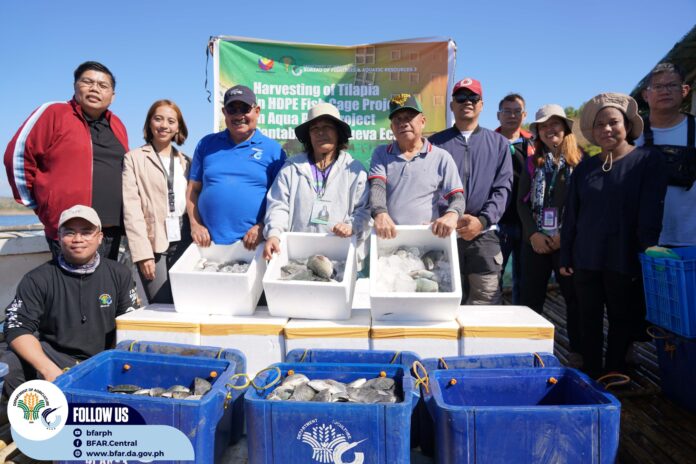The Bureau of Fisheries and Aquatic Resources (BFAR) is optimistic that the Pantabangan Aquaculture Park Project in Nueva Ecija helps supply the country’s food fish requirement.
The BFAR, together with the National Irrigation Administration, the Protected Area Management Board of the Department of Environment and Natural Resources-Biodiversity Management Bureau and the local government unit of Pantabangan, said over 400 kilograms of tilapia were harvested from the project last week, .
According to BFAR, the harvest marks the culmination of the research phase of the project se for greater expansion by utilizing more high density polyethylene (HDPE) fish cages in the reservoir for tilapia grow-out culture.
The agency also said that the park, which was established in 2022, houses 24 units of HDPE fish cages.
“Anticipated to amplify local fish production, the Pantabangan Aquaculture Park is poised to benefit not only the province but the entire Central Luzon region,” said Wilfredo Cruz, BFAR regional director for Central Luzon.
Joseph Bitara, Pantabangan Aquapark Project focal person, said the HDPE cages are flexible, strong and durable compared to alternatives like bamboo and GI pipes, making the material more viable for future expansion plans.
BFAR also gave assurance that the project is sustainably implemented, with the agency designated to monitor and conduct the necessary resource assessment while also leading the operations and development of the municipal Tilapia hatchery.
The agency is also keen on conducting technical and management training for fisherfolk beneficiaries and cage operators. The development of an aquaculture training agenda is also part of the plan..
The Pantabangan Aquaculture Park is part of the BFAR’s fisheries programs addressing food security by using small water impounding projects and other open water resources like dams and reservoirs.
BFAR said the Pantabangan reservoir has a great potential for aquaculture due to its advantageous location and clean environment.
Philippine Statistics Authority data show the Philippines produced a total 254,169.05 metric tons (MT) of all species of tilapia.
Central Luzon where Nueva Ecija is located, contributed 62.9 percent or 159,975.56 MT of total production.







